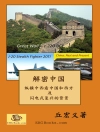How do we explain the surprising trajectory of the Chinese Communist revolution? Why has it taken such a different route from its Russian prototype? An answer, Elizabeth Perry suggests, lies in the Chinese Communists’ creative development and deployment of cultural resources – during their revolutionary rise to power and afterwards. Skillful ’cultural positioning’ and ’cultural patronage, ’ on the part of Mao Zedong, his comrades and successors, helped to construct a polity in which a once alien Communist system came to be accepted as familiarly ’Chinese.’ Perry traces this process through a case study of the Anyuan coal mine, a place where Mao and other early leaders of the Chinese Communist Party mobilized an influential labor movement at the beginning of their revolution, and whose history later became a touchstone of ’political correctness’ in the People’s Republic of China. Once known as ’China’s Little Moscow, ’ Anyuan came over time to symbolize a distinctively Chinese revolutionary tradition. Yet the meanings of that tradition remain highly contested, as contemporary Chinese debate their revolutionary past in search of a new political future.
Om författaren
Elizabeth Perry is Henry Rosovsky Professor of Government at Harvard University and Director of the Harvard-Yenching Institute. She is the author of many books, most recently: Mao’s Invisible Hand: The Political Foundations of Adaptive Governance in China and Patrolling the Revolution: Worker Militias, Citizenship and the Modern Chinese State.












